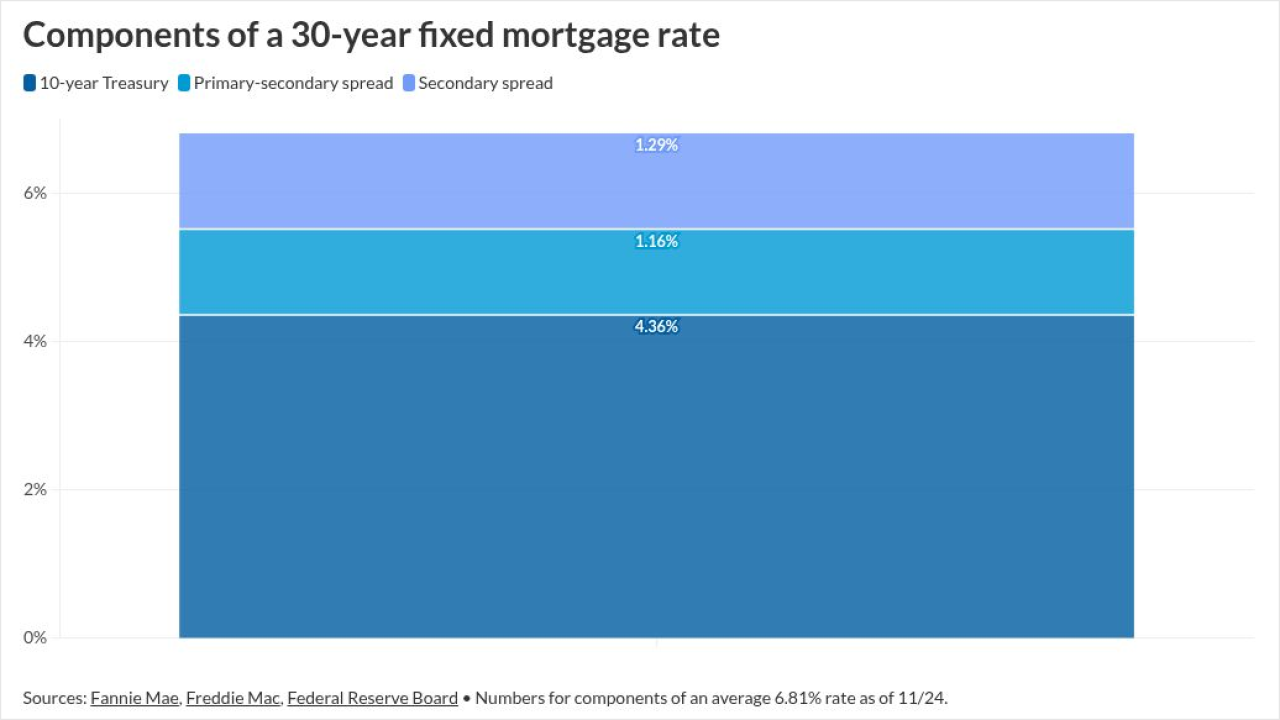Utility securitizations, once used to reimburse power companies for assets that became “stranded” as a result of electricity market deregulation, are making a comeback. Now, utilities and state governments are searching for ways to deal with the huge costs associated with green energy transition, climate change and even the COVID epidemic.
After an approximate 20-year period of relatively moribund issuance of ratepayer-backed bonds – as the fixed income instruments floated as a result of utility securitizations are known – utility securitization deals are getting done, with more are on the way.
“Utility securitizations are set for a resurgence as electric utilities deal with costs surrounding the transition out of hydrocarbons into green energy," said Joseph Fichera, CEO of utility securitization advisory expert Saber Partners. "There are also attempts being made to apply the ratepayer securitization model to costs from the COVID epidemic, as well as the increasing costs associated with climate change."
After a long absence from the ratepayer bond market, in mid-February Southern California Edison
Legislators in Sacramento have approved unprecedented levels of utility securitizations. SoCal Edison’s February ratepayer issue is likely to be the first in a series of ratepayer bonds as the utility has been authorized to issue up to $1.6 billion worth.
And troubled California utility Pacific Gas & Electric, PG&E, has authorization to issue a record $3.2 billion for wildfire mitigation costs and is seeking another $7.5 billion of ratepayer bonds to pay wildfire victims. Also on the ratepayer bond schedule for PG&E and other California utilities, according to Saber Partners, are ratepayer bonds to reimburse COVID-related costs.
(In the case of PG&E, a wrench has been thrown in the utility’s securitization plans. California consumer advocates are vigorously litigating the record $7.5 billion securitization authorization, claiming the interests of ratepayers aren’t adequately being taken into account. This despite the fact that PG&E has promised that securitization deals will be neutral with respect to overall electricity rates for consumers.)
A brimming pipeline
To give an idea of the extent of the ratepayer bond resurgence, only $50.8 billion of ratepayers were issued 1997 through 2019, with just $4.1 billion principal amount currently outstanding.
Twenty-five states plus Puerto Rico and the District of Columbia have had laws authorizing utility securitizations, but
Meanwhile, Colorado and Montana have also recently passed utility securitization enabling legislation, while six states – Kansas, Missouri, Minnesota, Iowa, South Carolina and Arizona – are considering new utility securitization authorizations.

“If securitization were used for early retirement of all coal plants in the nation as well as to pay for COVID costs, perhaps hundreds of billions of dollars in ratepayer bonds would need to be issued,” says Fichera. “But not all coal plants and COVID costs will be dealt with using securitization. Ratepayer issuance going forward, however, very well could surpass the $50.8 billion issued from 1997 through 2019.”
Investor demand for the SoCal Edison ratepayer bonds was overwhelming. Bankers close to the deal noted the offering was 8-10 times oversubscribed and spread guidance tightened across all three bond tranches.
For example, arrangers noted initial 55 basis-point guidance on the 5.76-year WAL Class A notes...but that tightened to a final price of 30 basis points by its Feb. 17 close.
Fichera says he expects demand to remain strong for ratepayer-backed bonds as investors seek high quality investments with longer-term durations.
Deregulation-era roots
Utility securitizations saw their genesis in the late 1990s when the electric utility deregulation movement was sweeping the nation. As part of that movement, vertically integrated utilities in many states were required to separate regulated (transmission) from power generation, which became unregulated.
The idea was to promote efficiency by introducing competition, creating new unregulated electricity generating enterprises that would jostle with each other to provide electricity at lower prices so as to maintain or grow market share.
Importantly, electric-industry reformers also wanted market price signals to start determining when and in what form new generation assets would be built or disposed of, not the centralized, command and control by committee system that came out of the "natural monopoly" utility industry model prevailing for more than 100 years.
But splitting transmission and generation created some headaches, not the least of which was the fact that many generation assets had yet to be fully paid for in the utility customer rate base. As a result of deregulation, generation assets were held in unregulated entities that had zero ability to amortize costs through what had been a captive customer base.
These generation assets became known as "stranded assets," a term that is now in ubiquitous usage throughout the electric power industry. Along with stranded assets were generation assets that produced power at costs that were no longer competitive in the newly deregulated environment.
If securitization were used for early retirement of all coal plants in the nation as well as to pay for COVID costs, perhaps hundreds of billions of dollars in ratepayer bonds would need to be issued.
Enter utility securitization, otherwise known as rate-payer-backed bonds. Ratepayer bonds were used to refinance utility holding company balance sheet debt, as well as to pay back equity associated with the investments in the newly stranded assets.
By going to state utility boards and through special legislation, electric utility holding companies were given permission to float these new ratepayer bonds to get reimbursed and spread the costs to ratepayers over time at a lower cost of funds. This idea then spread to massive storm damage costs starting with Hurricane Katrina and Rita in 2005, and also to rising environmental costs.
In a ratepayer deal, an SPV is set up that holds an irrevocable claim to a new charge on customer bills, a charge specifically levied to reimburse for any utility costs approved by state legislators. Regulators monitor the SPV trust, and every six months adjust the special charge to ensure that there is enough money in the SPV to pay off the ratepayer bonds on time.
“If certain ratepayers default or don’t pay their bills on time, these amounts are redistributed to all other ratepayers who are paying,” Fichera says. “No other structured debt product has that kind of cross collateralization on an essential commodity like electricity.”
Credit rating agencies have given ratepayer bonds AAA ratings based mostly on the irrevocability of the claim to the cash flow from the special charge. Another credit positive is the fact that regulators periodically adjust the level of the special charge to ensure adequate funding of the trust.

Defraying green costs
In addition to the securitization efforts for wildfire mitigation costs in Califormia, market observers see other drivers for ratepayer bond securitization.
One is the rising costs to utilities of providing relief to consumers and businesses impacted as the result of the pandemic. The California Public Utility Commission, for example, has put in place a moratorium on water and electric disconnections or collecting deposits and disconnection fees – all while unpaid bills continue piling up.
Utility securitizations can also be a resource for financing
“Environmental groups and renewable energy advocates have joined utilities in pushing for securitizations,” said J Paul Forrester, partner at Chicago-based law firm Meyer Brown. “It’s not often that you see utilities and environmentalists working hand-in-hand, but it makes sense because utility securitizations will smooth and accelerate the path for power company green-energy transition.”
In 2019, the environmental advocacy Sierra Club threw its weight behind utility securitizations: “Securitization is a key financing tool that can help electric utilities accelerate the retirement of uneconomic polluting coal plants and move more quickly toward a grid powered by clean, safe renewable energy”.
While utility securitizations in the end will lower overall costs for dealing with stranded coal assets and climate change costs, the extremely complex nature of the deals means that the costs of structuring securitized utility transactions are very high.
Saber Partners says that some deals have had structuring costs north of $20 million, costs that Forrester is working to mitigate.
While he would not name his client due to confidentiality concerns, Forrester says he has been retained by a non-profit to build a utility securitization deal template – a kind of “plug ‘n play” solution – that utilities and state governments can use to pave the way for more securitizations while also reducing costs considerably.
Correction: An earlier version of the ratepayer bond history chart included an incorrect figure for the issuance between 2018-2021.




